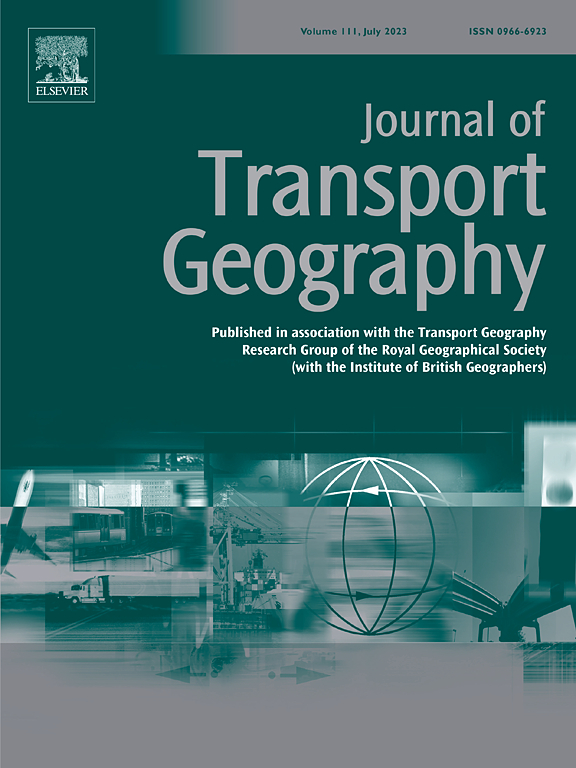Spatial analysis and predictive modeling framework of truck parking and idling impacts on environmental justice communities
IF 6.3
2区 工程技术
Q1 ECONOMICS
引用次数: 0
Abstract
This study introduces a comprehensive modeling framework to analyze truck idling and parking activities, illustrated through a case study in environmental justice communities in Kern County, California. It includes 1) exploratory spatial and cluster analysis to identify hotspots of those truck activities and their influencing factors, and 2) advanced predictive models, particularly the Cross-Validated Random Forests model, to predict and investigate critical factors influencing truck idling time, parking search time, and inferred truck parking demand. The results reveal that the percentage of heavy-duty trucks and the specific land use influence truck idling time. For parking search time, key predictors include distance to major roads and employment in certain industries. The inferred truck parking demand model underscores the impact of commercial land use areas, proximity to major roads, and socioeconomic factors. These findings enable the identification of hotspots for truck idling and parking searches, facilitating targeted interventions such as optimizing land use planning, improving infrastructure around major roads, and enhancing parking facilities in commercial zones. Integrating spatial, socioeconomic, and GPS aggregate data, the methodology provides a scalable framework applicable to other regions facing similar challenges through data-driven planning and policy initiatives.
货车停车与空转对环境正义社区影响的空间分析与预测模型框架
本研究引入了一个全面的建模框架来分析卡车空转和停车活动,并通过对加利福尼亚州克恩县环境正义社区的案例研究进行了说明。包括探索性空间和聚类分析,识别卡车活动热点及其影响因素;先进的预测模型,特别是交叉验证随机森林模型,预测和研究影响卡车空转时间、停车搜索时间和推断卡车停车需求的关键因素。结果表明,重卡比例和特定土地利用方式对重卡空转时间有影响。对于停车搜索时间,关键预测因素包括与主要道路的距离以及某些行业的就业情况。推断出的卡车停车需求模型强调了商业用地面积、靠近主要道路和社会经济因素的影响。这些发现有助于确定卡车怠速和停车搜索的热点,促进有针对性的干预措施,如优化土地利用规划,改善主要道路周围的基础设施,以及加强商业区的停车设施。该方法整合了空间、社会经济和GPS汇总数据,提供了一个可扩展的框架,适用于通过数据驱动的规划和政策举措面临类似挑战的其他地区。
本文章由计算机程序翻译,如有差异,请以英文原文为准。
求助全文
约1分钟内获得全文
求助全文
来源期刊

Journal of Transport Geography
Multiple-
CiteScore
11.50
自引率
11.50%
发文量
197
期刊介绍:
A major resurgence has occurred in transport geography in the wake of political and policy changes, huge transport infrastructure projects and responses to urban traffic congestion. The Journal of Transport Geography provides a central focus for developments in this rapidly expanding sub-discipline.
 求助内容:
求助内容: 应助结果提醒方式:
应助结果提醒方式:


